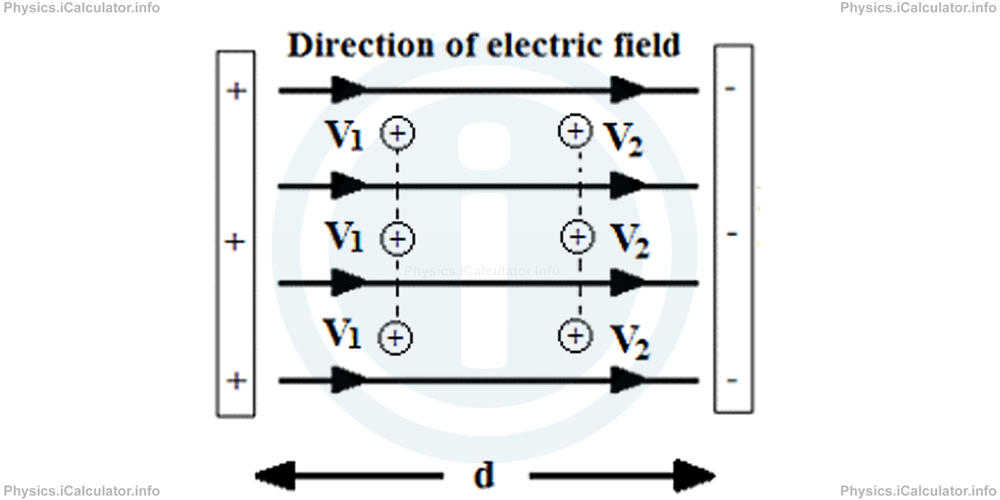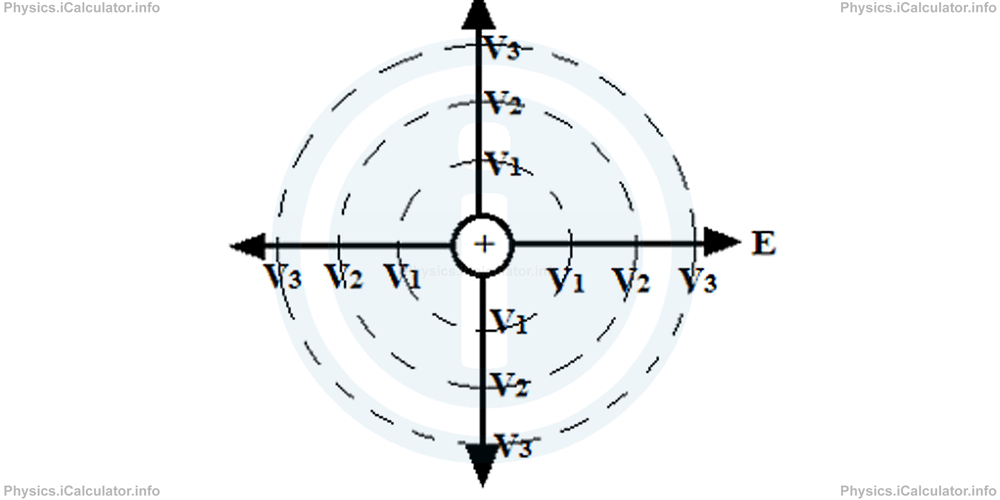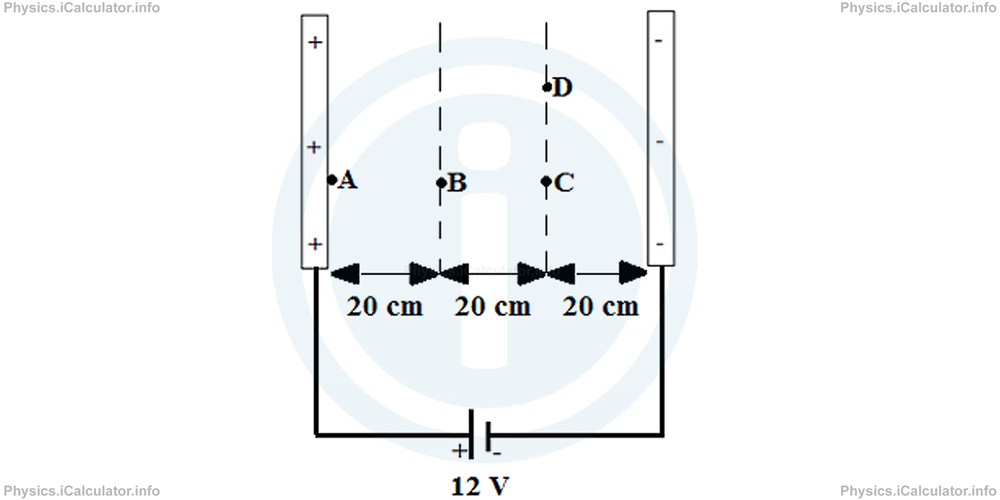Menu
Physics Lesson 14.5.6 - Equipotential Surfaces
Please provide a rating, it takes seconds and helps us to keep this resource free for all to use
Welcome to our Physics lesson on Equipotential Surfaces, this is the sixth lesson of our suite of physics lessons covering the topic of Electric Potential, you can find links to the other lessons within this tutorial and access additional physics learning resources below this lesson.
Equipotential Surfaces
As seen in the previous paragraphs, whatever type of electric field we may consider, whether uniform or non-uniform, there exist regions in these fields that have the same potential. For example, all points that have the same distance from any of plates in an electric field produced by two parallel plated charged oppositely, have the same potential, as shown in the figure.

This is because the movement of charges occur only in the direction of field lines where the potential changes continuously. Since no work is done to move the charge perpendicular to the field lines, the change in potential difference in this direction is zero. As a result, the potential V in all points aligned vertically in the above figure is constant.
The same thing occurs when the electric field is produced by a point or a spherical charge. Thus, all points that have the same distance from the point charge or the centre of sphere, have the same potential (are equipotential). In this way, an infinite number of concentric spheres whose surfaces are equipotential does result.

Example 5
Two parallel plates are connected to a battery of 12 V potential difference, as shown in the figure.

If the distance between plates is 60 cm, find:
- The magnitude of electric field at the points A, B, C and D.
- The potential differences ΔVCD, ΔVBD and ΔVAD.
Solution 5
a) Electric field at any point between two parallel plates is constant. It is produced by the battery whose potential difference is ΔV = 12 V. Since the distance between the plates is d = 60 cm = 0.60 m, we have for the electric field at points A, B, C and D:
= 12 V/0.60 m
= 20 V/m
b) The points C and D are located at the same equipotential line. Thus, VC = VD. This means ΔVCD = 0.
Based on the above reasoning, we have ΔVBD = ΔVBC. Given that dBD = 20 cm = 0.20 m and dAD = 40 cm = 0.40 m, we obtain
=20 V/m × 0.20 m
=4 V
and
= 20 V/m × 0.40 m
= 8 V
You have reached the end of Physics lesson 14.5.6 Equipotential Surfaces. There are 8 lessons in this physics tutorial covering Electric Potential, you can access all the lessons from this tutorial below.
More Electric Potential Lessons and Learning Resources
Whats next?
Enjoy the "Equipotential Surfaces" physics lesson? People who liked the "Electric Potential lesson found the following resources useful:
- Equipotential Surfaces Feedback. Helps other - Leave a rating for this equipotential surfaces (see below)
- Electrostatics Physics tutorial: Electric Potential. Read the Electric Potential physics tutorial and build your physics knowledge of Electrostatics
- Electrostatics Revision Notes: Electric Potential. Print the notes so you can revise the key points covered in the physics tutorial for Electric Potential
- Electrostatics Practice Questions: Electric Potential. Test and improve your knowledge of Electric Potential with example questins and answers
- Check your calculations for Electrostatics questions with our excellent Electrostatics calculators which contain full equations and calculations clearly displayed line by line. See the Electrostatics Calculators by iCalculator™ below.
- Continuing learning electrostatics - read our next physics tutorial: Electric Flux. Gauss Law
Help others Learning Physics just like you
Please provide a rating, it takes seconds and helps us to keep this resource free for all to use
We hope you found this Physics lesson "Electric Potential" useful. If you did it would be great if you could spare the time to rate this physics lesson (simply click on the number of stars that match your assessment of this physics learning aide) and/or share on social media, this helps us identify popular tutorials and calculators and expand our free learning resources to support our users around the world have free access to expand their knowledge of physics and other disciplines.